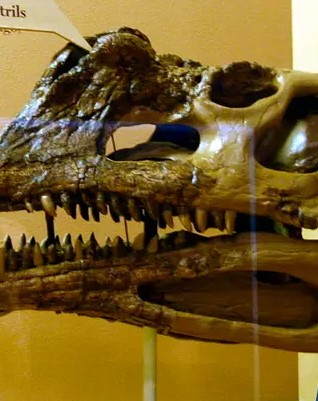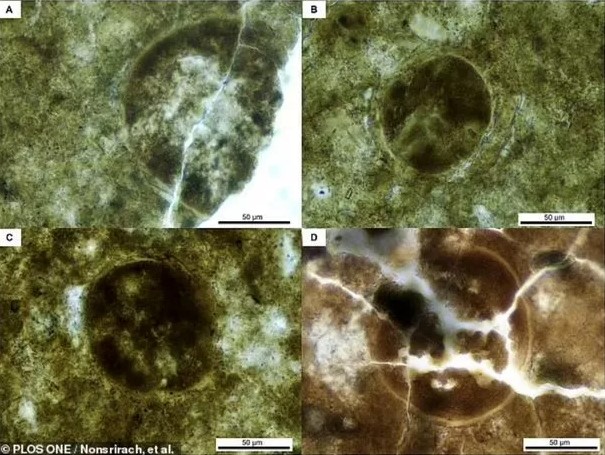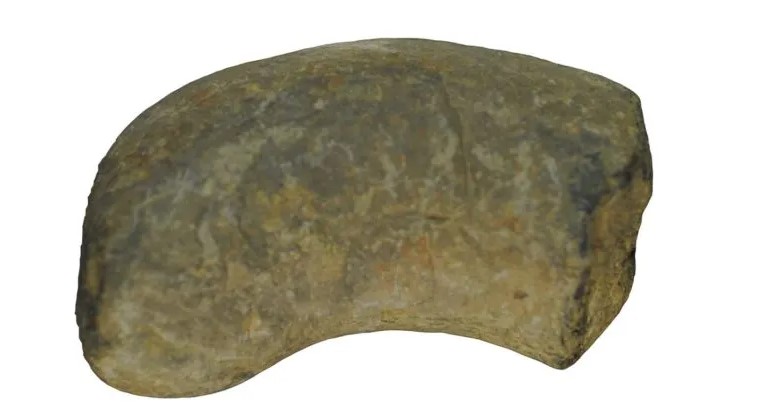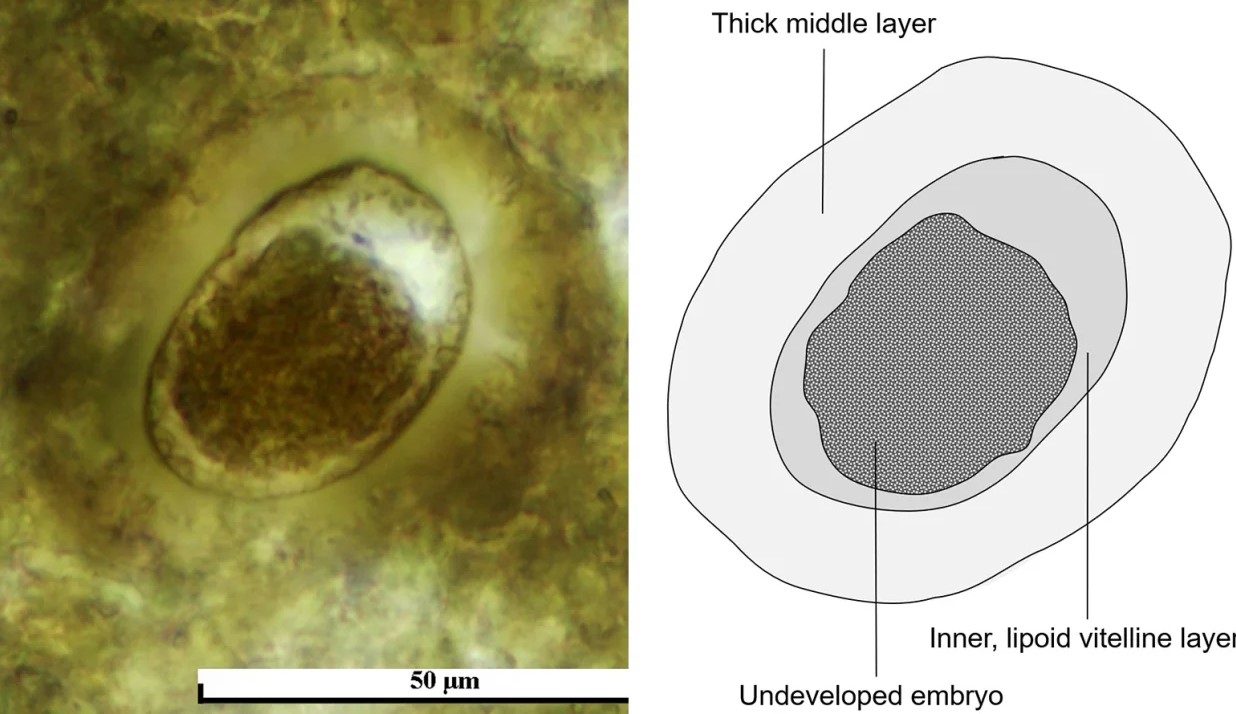Scientists have discovered that a 200 million-year-old crocodile-like predator was infected with multiple parasite species, including worms, in its fossilized feces, also known as a coprolite, discovered in 2010 from the Huai Hin Lat Formation in Thailand.

Researchers believe that the coprolite, a cylindrical, over 7cm long poo, was likely produced by phytosaurs, crocodile-like predators, who were known to have roamed the area where the poo was found.
A team from Mahasarakham University, Thailand, conducted a study on poo and discovered five types of parasitic remnants, each 50–150 micrometers long.

Researchers used a diamond saw "using a standard thin section method" to slice open an ancient worm egg, revealing its ultra-thin sections. The worm egg, discovered by local villagers over 13 years ago, was then viewed under a microscope. The study was published in PLOS ONE.
"The peculiar appearance of these findings intrigued the villagers, who considered them potentially auspicious and capable of bestowing good luck if repurposed as talismans," experts said.
Nonsrirach said it's rare to come across a parasite fossil, so he wanted to take a closer look.

"In 2010, our team received word of this discovery and embarked on a field expedition, guiding the villagers to the actual fossil site," Nonsrirach added.
“This new point of view gives us a deeper understanding of how past ecosystems were connected and how they affected the lives of prehistoric animals,” said Inverse.

The discovery provides valuable insights into the interaction between predators, prey, and parasites over 200 million years ago.
“Coprolites can preserve the soft bodies of ancient organisms, which helps us learn more about their biology,” Nonsrirach expressed.
“It's exciting to think that we might uncover new fossils that have never been seen before.”






